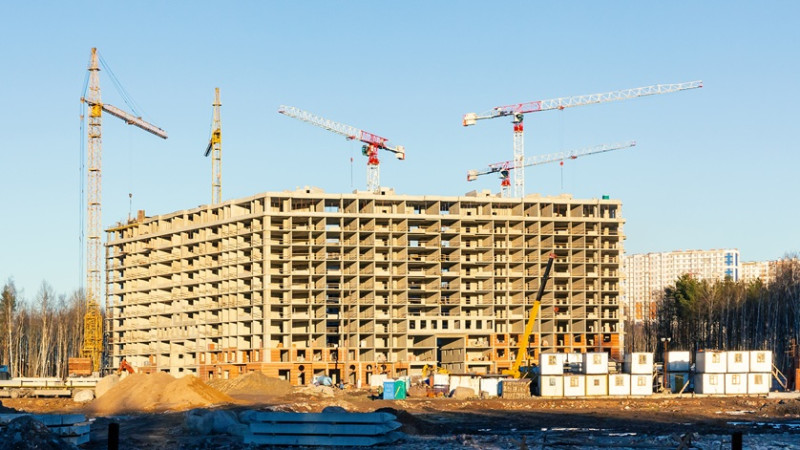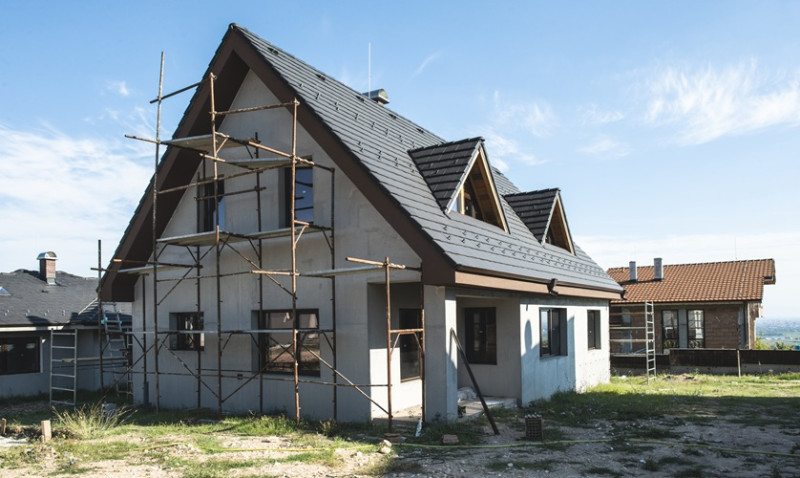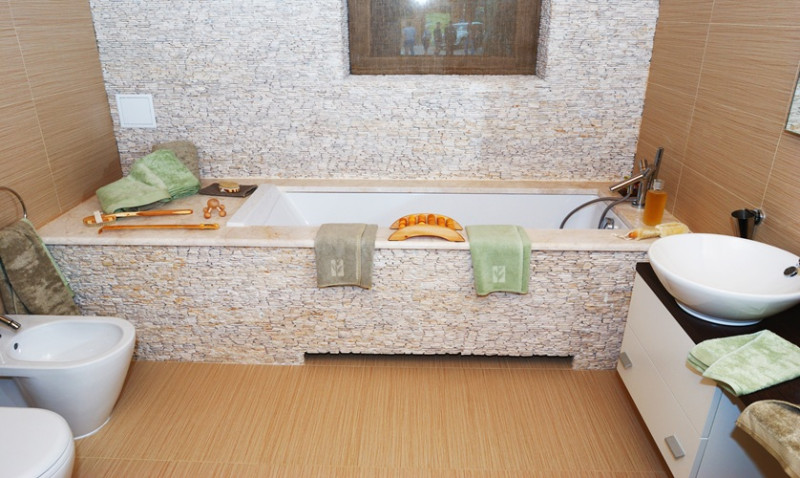
The UK housing market continues to evolve, and with limited supply in some of the most desirable areas, many homebuyers — from DIY enthusiasts to young professionals and even architects — are increasingly turning to new-build properties. Whether you’re planning your first home, investing in a buy-to-let, or simply seeking a more energy-efficient and modern space, buying a new construction home in the UK presents exciting possibilities. However, it's not without its complexities. Understanding the process, advantages, and potential pitfalls is essential before making such a significant investment.
In this guide, we’ll walk you through everything you need to know about buying new construction in the UK, looking at the benefits, the risks, and the steps involved — so you can make the most informed decision possible.
1. Why Choose a New-Build Home?
There are several compelling reasons to choose a new-build over a previously owned home. First and foremost, new homes are built to modern construction standards, meaning they’re often more energy-efficient, require less immediate maintenance, and come with contemporary fixtures and finishes that many buyers appreciate immediately upon move-in.
For DIY enthusiasts, a new-build offers a blank canvas, free from previous owners' questionable decor choices or dodgy plumbing. If you're hands-on, a newly built home makes it easier to personalise without the mess and unknowns that come with renovating an older property.
You may also benefit from financial incentives. Many developers offer perks to early buyers, such as part-exchange offers, help with legal fees, and even upgrades on appliances or flooring. The government-backed Help to Buy scheme (available until March 2023 in England, with variations in other devolved nations) has also made buying new homes more accessible for first-time buyers.
From a design and architectural standpoint, new homes often follow the latest layout trends, like open-plan living spaces, integrated smart tech, and efficient storage solutions. For professionals in the design and trades, working with new builds offers fewer surprises and constraints compared to retrofits.
2. What to Expect from the Buying Process
Buying a new-build differs slightly from purchasing an existing home. Typically, you buy directly from a developer or through an agent representing them. The home might be off-plan (not yet built), part-built, or ready to move in. Each of these stages comes with its own set of expectations and considerations. For example, buying off-plan often requires envisioning the finished space from floorplans alone — a skill many architects and designers relish, but which may challenge first-time buyers.
Reservation fees are usually payable to secure your chosen plot. This can range from £500 to £2,000 and may or may not be refundable — so always read the terms carefully. After reservation, you'll exchange contracts — usually within 28 days — and pay a deposit (typically 10%). The completion date may be set in stone (if ready) or left flexible (“on notice”) if construction is ongoing.
An important role is played by your conveyancer — make sure they’re experienced with new-builds, as there are differences in legal documentation and timelines. Your solicitor will check planning permissions, infrastructure, warranties, and service charges — especially important for leasehold flats in new developments.
It’s also vital to understand the long-stop date — the maximum date by which the developer must complete the unit. This protects your investment in case of construction delays, though penalties after this point may vary depending on your contract clauses.
3. Understanding Warranties and Guarantees
Almost all UK new-build homes come with a 10-year warranty, typically through schemes like the NHBC Buildmark, Premier Guarantee, or LABC. These provide peace of mind but are not a blanket guarantee on all issues. The coverage is usually split into two periods:
- Years 1-2: Your builder is responsible for fixing defects caused by failures to meet the standards of the warranty provider.
- Years 3-10: Cover applies only to major structural issues — for example, foundations, roofs, and walls.
Homebuyers should conduct a thorough snagging survey before completion — or right after moving in — to identify issues like poor finishings, faulty paintwork, misaligned doors, or plumbing problems. Tradesmen in the know often recommend using a professional snagging company, which provides a detailed list to give the developer before their liability expires.
Keep an eye on what’s included in your warranty and what isn’t. For instance, appliances, light fittings, and flooring may only be covered by the manufacturer’s standard guarantee, not the property warranty itself.
4. Hidden Costs to Watch Out For
Buying new-build isn’t just about the price on the brochure. There are often hidden — or easily overlooked — costs that can creep up if you're not careful. Some of these include:
- Landscaping and Fencing: Some developers leave gardens as bare turf or even unfinished, leaving you to invest in landscaping or fencing for privacy.
- Service Charges: Especially in apartment blocks or privately managed estates, you may face ongoing fees for upkeep of communal areas, roads, or green spaces.
- Customisation Costs: Many developers offer “upgrade packs” for flooring, cabinetry, worktops, or lighting — but these can be pricey. Architects and designers may prefer a shell finish, to re-specify interiors themselves.
- Parking Fees: Not all homes come with included parking, even in suburban developments. Check what’s included and whether planning permission governs restrictions.
Additionally, be wary of completion day costs. Moving expenses, final legal fees, utility connections and professional snagging surveys can all add hundreds — if not thousands — to the final bill.
5. Energy Efficiency and Environmental Considerations
One of the top advantages of buying new is how much energy efficiency has improved in recent years. New homes are typically rated EPC B or above (versus D for many existing homes), thanks to advanced insulation, double or triple glazing, and low-energy lighting or heating systems like air-source heat pumps.
Tradesmen and installers will appreciate how far building technology has come — reducing both the cost of long-term maintenance and environmental impact. If you're keen on green living, investigate which standards your developer is building to. Some estates are even “zero carbon” or feature solar PV, car charging points, and rainwater harvesting systems.
For architects and designers, this means fewer limitations when specifying materials and finishes — as long as the developer permits such changes. Young professionals can also enjoy lower household bills due to efficient boilers, thermostatic zoning, and pre-installed smart meters.
6. Customisation and Upgrading Options
While some developers offer “what you see is what you get,” many allow buyers to choose finishes, layouts, and some materials — particularly if purchasing off-plan. This appeals to those who want more than the standard white tile and grey carpet aesthetic. DIY homeowners may enjoy taking more personal control, while design professionals can liaise with the builder to ensure visual consistency throughout.
Here’s a quick example of common upgrades many developers offer:
| Standard Feature | Possible Upgrade |
|---|---|
| Laminate Worktops | Quartz or Granite Surfaces |
| Basic Tiles | Porcelain Tiles or Custom Splashbacks |
| Carpet | Engineered Hardwood or LVT Flooring |
| Gas Boiler | Air Source Heat Pump |
| Halogen Spotlights | Smart LED Lighting System |
However, remember that these upgrades can rack up costs quickly. Some buyers opt for the basic finish and plan to upgrade rooms themselves over time, especially those with a confident DIY or trades background.
7. Developer Reputation and Aftercare
All new homes are not created equal. From uneven walls to poorly fitted kitchens, ‘buying brand new’ doesn’t mean ‘perfect’. That’s why researching your developer is essential. Look for reviews, awards (such as those from NHBC, Housebuilder Awards, or Homebuilder Federation), and social media evidence of customer experiences.
Check construction quality by visiting show homes, completed phases, or forums dedicated to housing developments. Tradesmen often share inside knowledge on which builders take real pride in their work — and which ones cut corners to save costs.
Beyond the sale, consider what kind of aftercare the developer offers. Some have designated customer care teams ready to resolve your snags within the first couple of years. Find out how accessible this team is, average response times, and whether the company is transparent about resolving complaints.
For professionals in design and fit-out, it’s worth knowing whether developers allow internal remodelling in the future — and what restrictions or planning permissions may apply to structural alterations or extensions.
Conclusion: Is Buying New Right for You?
Buying a new-build in the UK brings many advantages: low maintenance, energy efficiency, and modern design. It suits a wide range of buyers — from tradesmen looking to reduce initial renovation work, to young professionals seeking convenience, or designers who want to shape interiors to their style.
But tread carefully. Always validate the quality of the developer, assess long-term running costs, and budget beyond the asking price. Whether it's a starter flat, a family home, or an investment property, make the most of your purchase by being informed, prepared, and proactive from the beginning.
The right new-build can be more than just a house — it can be the solid foundation for your future.





